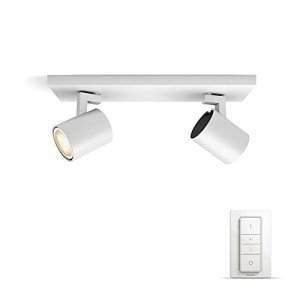15 Terms Everybody Is In The Buy Kitchen Lighting UK Industry Should Know
A Comprehensive Guide to Buying Kitchen Lighting in the UK
When it comes to kitchen design, lighting plays a vital function in performance, aesthetics, and overall ambiance. Choosing the right kitchen lighting can considerably enhance how you utilize area, impacting whatever from meal preparation to amusing visitors. With the huge range of choices readily available in the UK, it can be daunting to choose the perfect kitchen lighting. This guide intends to simplify the procedure and provide important insights into the various types of kitchen lighting, factors to consider, and pointers on making informed decisions.
Types of Kitchen Lighting
Understanding the different kinds of kitchen lighting is essential for accomplishing a well-lit space. Each classification serves an unique function and can be used to produce a layered lighting result.
Kind of Lighting
Description
Task Lighting
Offers focused illumination for particular tasks, such as cooking, checking out recipes, or washing dishes.
Ambient Lighting
Deals total illumination for the whole kitchen, normally through overhead fixtures or ceiling lights.
Accent Lighting
Highlights particular features or decorative components, such as art work, backsplashes, or architectural information.
Decorative Lighting
Adds a stylistic or aesthetic touch, such as pendant lights and chandeliers that act as focal points.
Job Lighting
Job lighting is vital for making sure safety and effectiveness while preparing meals. Under-cabinet lights, for example, are a popular option as they light up the counter top without adding shadows, making tasks much easier.
Ambient Lighting
Ambient lighting provides a warm, welcoming glow to the kitchen. This can be attained through ceiling-mounted fixtures, recessed lighting, or chandeliers. The secret is to make sure consistent light circulation throughout the area.
Accent Lighting
Accent lighting, utilizing fixtures like wall sconces or LED strip lights, directs attention to specific locations or features within the kitchen. This kind of lighting can be particularly efficient in showcasing gorgeous backsplashes, cabinet designs, or decorative items.
Decorative Lighting
Decorative lighting includes character and design to a kitchen. Pendant lights above an island or a stylish chandelier can end up being declaration pieces, boosting the kitchen's general design.
Elements to Consider When Buying Kitchen Lighting
Selecting the proper kitchen lighting involves evaluating several vital aspects to ensure you make the best decisions for your space.
Layout and Size of the Kitchen
- Comprehend the measurements of your kitchen and identify key workspace. The layout will determine how you disperse light.
Performance
- Think about how you utilize the kitchen. If you frequently prepare or host, go with job lighting. If your kitchen doubles as a dining location, ambient lighting will also be vital.
Design and Aesthetics
- Ensure lighting fixtures match the kitchen's design. Whether modern, traditional, or diverse, the design ought to harmonize with other elements.
Color Temperature
- Light color considerably affects the atmosphere. Warmer tones (2700K-3000K) create welcoming environments, while cooler tones (4000K-5000K) are better matched for task-oriented areas.
Energy Efficiency
- Consider LED alternatives, as they take in less energy and have a longer life expectancy compared to incandescent or halogen bulbs.
Dimming Capability
- Integrating dimmer switches permits flexibility in changing light strength for various activities.
Tips for Buying Kitchen Lighting
When shopping for kitchen lighting, keep the following ideas in mind:
- Measure First: Measure the areas where you plan to install fixtures to ensure they fit well.
- Mix Fixtures: Combine different kinds of lighting for a well balanced method, blending task, ambient, and decorative options.
- Think about Placement: Pay attention to the height at which you set up fixtures. For islands, pendants must hang 30-36 inches above the surface area.
- Assess Brightness: Look at lumens rather of watts; brighter does not constantly suggest much better in terms of functionality.
- Select Quality: Investing in quality fixtures will conserve you money in the long run due to durability and minimized maintenance requirements.
Often Asked Questions (FAQs)
1. What is the best type of lighting for kitchen jobs?
Task lighting, such as under-cabinet lights or pendant lights over work surfaces, is ideal for kitchen tasks as it supplies focused illumination.
2. How do I select the right size of pendant lights?
A general rule of thumb is that the diameter of the pendant ought to be around one-third the width of the island. If your island is 4 feet wide, look for pendants that are around 12 inches in diameter.
3. Can lightingandlamps.uk utilize a dimmer switch for all types of kitchen lights?
Not all lights are dimmable. Examine the product requirements before installation. LED lights and some fluorescent lights are more likely to need compatible dimmer switches.
4. How can I enhance my kitchen lighting without major remodellings?
Think about incorporating plug-in under-cabinet lighting, trendy floor lamps, or battery-operated LED lights to improve lighting without comprehensive changes.
5. Is it necessary to work with a professional to set up kitchen lighting?
While simple installations can be done independently, it's recommended to work with a qualified electrical expert for complicated setups to ensure security and functionality.
Choosing the ideal kitchen lighting in the UK involves comprehending different lighting types, evaluating necessary aspects, and carrying out tactical pointers. By focusing on the kitchen's design, performance, and style, house owners can produce a well-lit, welcoming area that enhances everyday activities and events. Whether embarking on a complete remodelling or an easy lighting upgrade, the ideal choices will light up both the kitchen and the culinary experiences shared within it.
